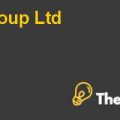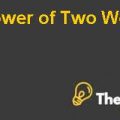Problem Diagnosis
The senior managers of the GSO Capital Partners were considering to invest in the senior secured debt of Kodak in May 2013 to support the reorganization plan of the company. Kodak had suffered badly due to the bad economic climate and the failure of the company to quickly adapt the digital photography. The traditional businesses of Kodak of photographic films and manufacturing of the cameras has almost disappeared. During the period 2009 to 2011, the company had reported the net losses of around $ 209 million and these have been increasing to $ 687 and then to $ 764 million. The stock price of the company had also plummeted and it had fallen from $ 35 to $ 2 between 2005 and 2011 which is a decline of around 95%.
The sales of the company continued to decline and the company was losing its market share. GSO has previously taken different positions for the debt of Kodak over the last four years and now it is faced with a major decision. GSO had introduced an amended plan under which the 85% of the common stock of the company would be given to the secured creditors such as GSO and it would backstop $ 406 million equity rights offering which would be made to all the unsecured creditors directly. This amendment would attract the unsecured creditors but it has its own risks and a large capital investment would also be required by Go.
Eastman Kodak Company Restructuring A Melting Ice Cube Harvard Case Solution & Analysis
Question 1
Did it make sense for Kodak to file for Chapter 11 bankruptcy? Given the high monthly cost of being in Chapter 11, should management have tried to restructure the company out of court, or pursue some other restructuring option?
Kodak had been trying hard to cut the costs and transform the business however, the profitability of the company has continued to plunge. During the period 2009 to 2011, the company had reported the net losses of around $ 209 million and these have been increasing to $ 687 and then to $ 764 million. The stock price of the company had also plummeted and it had fallen from $ 35 to $ 2 between 2005 and 2011. The sales of the company continued to decline and the company was losing its market share. Other factors that contributed to the severe decline in performance of the company included the unexpected difficulty in collecting the license fees, continuing stresses within the economy, rising raw material costs and increasing employee retirement costs for the company.
Another significant factor that had contributed to the fall of Kodak is the slow transformation of the company for adopting the digital photography. Digital Photography had taken off Kodak but Kodak was not ready for it. From the late 1990s to 2008, the market of the digital cameras in United States had grown rapidly from around 4.5 million units in the year 2000 to 28.3 million units in the year 2007. During this time period, Kodak had only focused on the niche markets of digital technology..........
This is just a sample partial case solution. Please place the order on the website to order your own originally done case solution.










